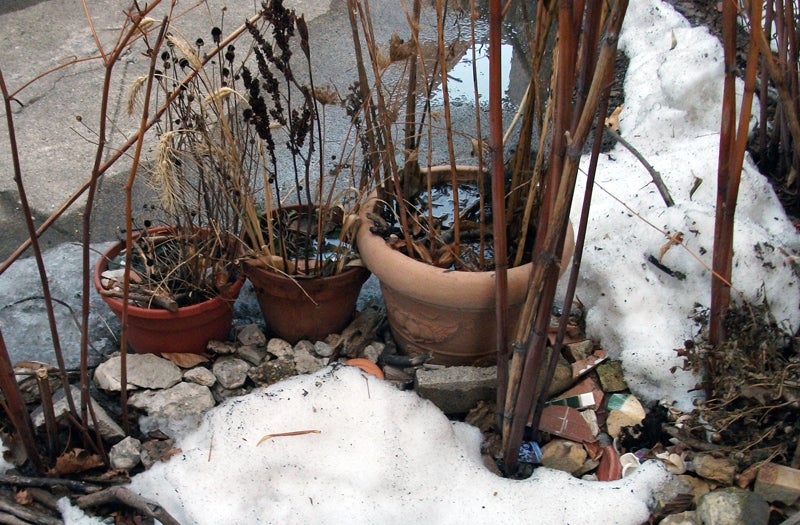Ways to Prevent Snow Mold on Your Lawn
ListenAn early snow on vigorously growing grass can lead to a condition known as snow mold. Mike McGrath, host of You Bet Your Garden, will reveal how to prevent and/or treat it. Plus: Mike speaks with Diane Lewis, M.D., author of The Great Healthy Yard Project, about the new findings from The World Health Organization that glyphosate, the chemical in leading herbicides, is linked to several types of cancer; and answers to all your growing questions.
Questions of the Week:
As this winter’s relentless snow finally began to melt, it exposed small patches of fuzzy mold on some parts of my lawn. Could this be snow mold? The lawn is in full sun and was planted new last August. I had a truckload of screened topsoil delivered, levelled the area, and planted Tall Fescue. (Yes, I now know that fescue is better for shady spots; d’oh!)….
— Dave in Randolph NJ
Learn how to treat snow mold? »
-
 Photo: From flickr user ECP
Photo: From flickr user ECP
Highlights from show for April 10, 2015:
Diane Lewis, M.D.
Mike speaks with Diane Lewis, M.D., author of The Great Healthy Yard Project about The World Health Organization’s recent announcement that glyphosate is a probable human carcinogen. Glyphosate is the active ingredient in many herbicides, the largest being Roundup. Dr. Lewis discusses the implications for these findings with Mike and how dangerous this chemical really is to humans, animals and our environment as a whole.
Plant and Sunlight
Leila in Philadelphia, PA has a yard with little grass, mud and lots of shade. Her husband has been trying to have a garden in that area, but she wants to convince him to install raised beds in another area that has sun. She also wants to know what to do with the bare part of her yard. Mike suggests using pavers to create a walk way in the shady/muddy area. Mike encourages Leila to plant in sunlight because studies have shows that plants that are forced to grow in low light environments are close to not safe for consumption for they develop high levels of nitrates.
Killer Wood Mulch
Dave from Vineland, NJ has a couple of rhododendron bushes that have “dime-size holes” in their leaves and are beginning to die off. He also adds that he mulches his plants with wood mulch and their sun exposure has increased over the years. Mike says the wood mulch is killing the rhododendrons, because it is making the soil alkaline and is stealing the nitrogen that it contains. Mike adds that they possibly could have had “sun-scald” as well. Mike instructs Dave to remove the wood mulch, and purchase bricks peat moss and spread it around the base of the entire plant and cover with compost.
Growing Shishito Peppers
Darem in Bethlehem, PA would like to know how to grow shishito peppers in his area in the summer. Mike recommends to first get a pack of seeds and take them to the nursery so people there can grow out starter plants. Mike wants Darem to to take the first step by potting them into containers into a mixture of soil-free mix and compost. He should grow them in an area where there is lots of sun, because all peppers are ‘sunny-plants’. After the first six weeks, in approximately 60 to 65 days, there should be full sized green peppers. Before the nights begin to get cold, wash them down thoroughly with a sharp nozzle. Then, bring them inside and let a shop light hover over them (either 2 – four foot long fluorescent tubes or 4- four foot long fluorescent tubes). These plants can survive in the winter and can be set out outside again in the spring time.
WHYY is your source for fact-based, in-depth journalism and information. As a nonprofit organization, we rely on financial support from readers like you. Please give today.

